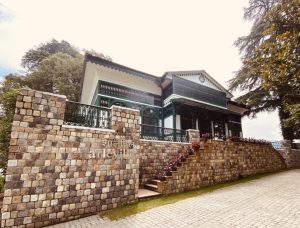 By Ganesh Saili
By Ganesh Saili
Let me start with a disclaimer. As a rank outsider, my brief was simple: ‘Encourage young officer trainees to take up photography as a hobby.’ As the years rolled by, the rains brought a wash of young probationers gushing through the gates of the National Academy. They were ready to leave just before winter knocked. One of the first things you notice is that you are dealing with the end products of one of the finest distillation processes in the country.
‘What’s it like teaching them?’ Oft have I been asked.
‘Ever walk into a room full of academic Dhonis?’ I answer. ‘Each adept at the helicopter shot that sends the ball flying over the boundary!’
 But make no mistake. This bubbly dousing keeps trainers on their toes 24 x 7. You can give no slack. You take no slack. Miss a beat and you are snared.
But make no mistake. This bubbly dousing keeps trainers on their toes 24 x 7. You can give no slack. You take no slack. Miss a beat and you are snared.
On Day One, I arrive for my class to stand on the steps outside Karamshila – the hub of training. On a pedestal stands a granite bust. The plaque reminds one: ‘You will not have a united India, if you do not have a good All India Service which has the independence to speak out its mind.’ The immortal words of Sardar Vallabhbhai Patel – the Iron Man of India – echo from the time of the country’s Independence. He held his ground when each state satrap quibbled for a pliable civil service of their own, it would have been more comfortable.
 Should you unwind the scroll of history, you find that our bureaucracy dates back to the tumultuous times of post-1857, when the territories held by the East India Company were transferred to the Crown. To run a country of this size, they created the Indian Civil Service (or the ‘Heaven-born.’) After that there was no looking back. Post- 1858 the Civil Service had its hands full. Some earnest officers did try to educate the Municipal Boards to work honestly as well as efficiently, but few had any lasting success. In the early days, selections were based entirely on competitive examination, but subject to an interview. In the transition years, the older Oxbridge-type men spoke disparagingly of the new competition-wallahs in the mistaken belief that eminence in learning would only fit them for excellence in desk work.
Should you unwind the scroll of history, you find that our bureaucracy dates back to the tumultuous times of post-1857, when the territories held by the East India Company were transferred to the Crown. To run a country of this size, they created the Indian Civil Service (or the ‘Heaven-born.’) After that there was no looking back. Post- 1858 the Civil Service had its hands full. Some earnest officers did try to educate the Municipal Boards to work honestly as well as efficiently, but few had any lasting success. In the early days, selections were based entirely on competitive examination, but subject to an interview. In the transition years, the older Oxbridge-type men spoke disparagingly of the new competition-wallahs in the mistaken belief that eminence in learning would only fit them for excellence in desk work.
Fortunately, the Sandman proved them all wrong.
The total number of ‘Heaven-born’ at any one time varied between just under 1000 and 1300. They administered ten provinces varying in size from 97,000 to 1,70,000 square miles – each single one alone was larger than the United Kingdom (94,211 square miles). So at any given time there were no more than at most 100 civil servants on active duty in the districts at any one time and up to 50 on leave. Members of the service held nearly all the highest posts. Misogyny ruled! No women was not entry allowed into this charmed circle. Though imagine the task when a single civilian, assisted by one or two junior civilians and half a dozen Indian subordinates, along with a Police Superintendent and his subordinates, maintained law and order. That apart, there were numberless issues that cropped up every other day.
The simple advice was: ‘The capacity of a civilian’s mental power should be similar to that of the elephant’s trunk, which can pick up a pin and pull down a mighty forest tree.’
Narendra Sahani, an old resident living in retirement, recalls his father worked in Metcalfe House in Delhi. He remembers the times when the Administrative Academy moved from the Civil Lines of Old Delhi to Happy Valley in Mussoorie: ‘We arrived here on in the deep of the night on August 28, 1959.’
If one tried to compile a list of all those who have been here, it would look like a telephone directory. You would have the Vice President of India, Chief Ministers, Cabinet Ministers, Ambassadors, Police Chiefs, writers, poets and a many illustrious others.
Together, both separately and jointly, they have been a part of the proverbial ‘Steel Frame’ that has held us together.
Ganesh Saili born and home-grown in the hills belongs to those select few whose words are illustrated by their own pictures. Author of two dozen books; some translated into twenty languages, his work has found recognition world-wide








